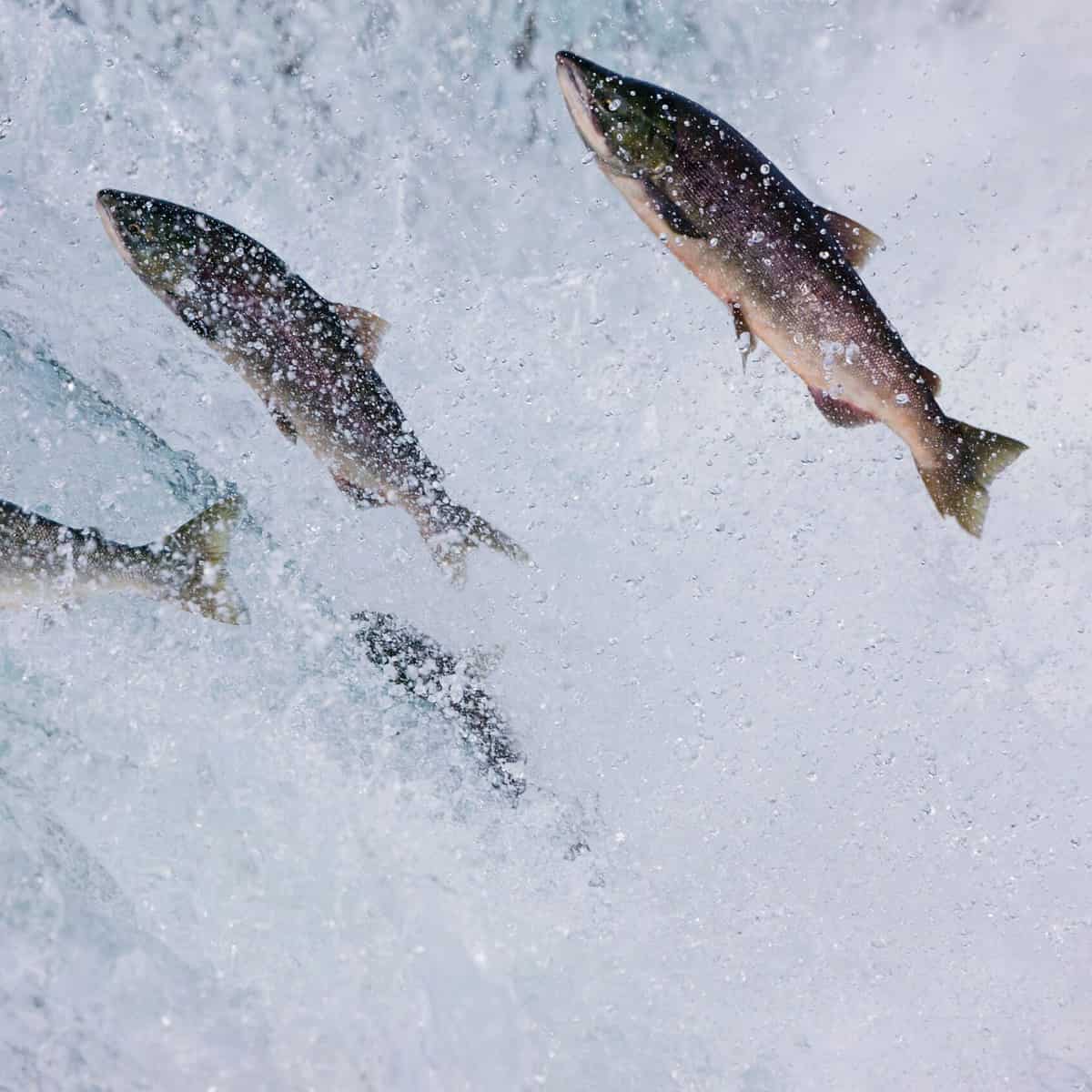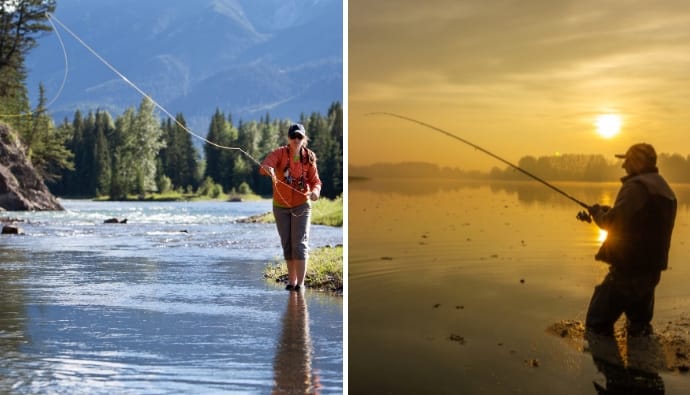Are you curious how big do rainbow trout get? Rainbow trout are one of the most popular game fish in the entire world. Trout guide and fly fishing instructor Daniel O’Neill, discusses how big rainbow trout get and how to catch these larger fish.
As a child, one of my earliest fishing memories involved catching rainbow trout, a captivating species known for their diverse sizes and power. They are hard-fighting aggressive fish. Rainbow trout are easy to identify as they have a silver body with purple and blue streaks across their side.
With an extensive background fishing for rainbow trout, I have had the opportunity to reel in these beautiful creatures in a wide range of sizes. From tiny fish weighing around 1 pound to impressive trophies surpassing 20 pounds, I have witnessed the diversity of their size firsthand.
Join me as we dive into the realm of rainbow trout. Exploring topics such as the largest specimens ever recorded, their maximum age, and effective techniques for catching larger individuals. So, how big do rainbow trout get?
The Short Answer
The largest size a rainbow trout can grow to is 40lb without the help of genetic modification. Some genetically modified fish have weighed in at upwards of 50lb. On average, a rainbow trout weighs approximately 1 to 4lb.
The Long Answer
In California, a natural rainbow trout was caught that weighed approximately 38 lb. The angler released the fish. Therefore, it was not approved as a state record. This specific fish can be considered as one of the largest natural rainbow trout ever caught. However, genetically modified fish can grow much larger.
When I first started angling, I practiced at stocky lakes, otherwise known as pay lakes. These are lakes stocked with sport fish, usually rainbow trout, that anglers can target for a daily fee. At these lakes I have personally caught rainbow trout over 20lb on the fly. However, these fish have been genetically modified to grow at faster rates and reach larger sizes.
So how is this possible? Altering the specific gene that produces Myostatin seems to result in more muscle mass, producing larger fish. Some genetically modified rainbow trout have been reported to weigh upwards of 50lb.
What Is the Average Size of Rainbow Trout?
The average size of trout differs depending on your location, however, the average rainbow trout is approximately 1 to 5 lb in weight. Factors that could affect the average size of trout in your location include; food abundance, habitat size and commercial fishing.
What Is the Largest Rainbow Trout Ever Caught?
As previously mentioned the largest rainbow trout ever caught are genetically modified fish. These fish are named triploids. Triploids have three sets of chromosomes making them sterile. This allows them to conserve energy and in return grow to much larger sizes.
The largest registered rainbow trout was caught by Sean Conrad in Canada, 2009. The fish weighed in at 48lb, breaking the previous record by over 4lb.
From my personal experience, I have heard many anglers debate the legitimacy of triploid fish. They are viewed as unnatural and most caught are fish farm escapees. I personally understand these views, however I don’t believe the topic is black and white, I feel it depends on the individual scenario and how the angler has caught and landed the fish.
How Fast Do Rainbow Trout Grow?
On average, it takes a wild rainbow trout four years to reach twelve inches in length. However a farmed trout has the potential to grow exponentially quicker. I personally have been lucky enough to have toured rainbow trout farms in Ireland. On these specific farms the trout are bred in order to be sold as stock for sport fishing.
From my time on these farms I have been shown the processes surrounding the trout’s growth. This specific set of farms used a mixture of high protein pellets, fish oil and grain in order to improve the growth rate of their fish.
How Old Do Rainbow Trout Get?
The record for the oldest ever rainbow trout is eleven years old. However, rainbow trout usually only live to a maximum of eight years old. On average, they survive four to five years.
How Do You Catch Bigger Rainbow Trout Lure Fishing?
I have targeted rainbow trout on lures my entire life. I started my lure fishing journey on basic drop shot methods and switched into using small spinnerbaits. My personal favorite spinner bait is a Mepps Comet Decoree. I had great success spinning for rainbow trout, however after some time I wanted to land larger specimen fish.
After some research, I discovered that larger rainbow trout will sit in pools of deep water. Therefore using a heavier lure, I find 42 grams work best. The heavier lure sinks quicker and receives strikes from girthier trout.
Trout upwards of 10 lbs are not as aggressive as smaller fish. From my experience, the most aggressive takes I have had are from rainbow trout around the 5lb mark. Based on this knowledge, I recommend retrieving your lure at a moderate or slow pace. Fast, harder retrieves may encourage younger, healthier trout to strike. However, if you are targeting only specimen fish, try to make the retrieve as realistic as possible. Make sure to pause while retrieving, as this encourages the trout to strike.
How Do You Catch Bigger Rainbow Trout Fly Fishing?
Ninety percent of my double-figure trout have been caught through nymphing or bung fishing techniques. These approaches maintain the flies at a consistent water level throughout the entire process.The reason behind its success lies in the natural presentation of the flies, representing insects that rainbow trout often feed on. This entices the larger, more cautious trout, increasing the chances of a strike.
As mentioned earlier, larger fish tend to occupy deep holes in rivers and lakes. To effectively target these trout, use a sinking line instead of a floating line on your fly reel. A sinking line enables you to get your flies down to the desired depth where the larger trout are hiding, making it easier to reach them
Practice your casting. Larger trout, in comparison to smaller trout, are easily spooked. This is due to a combination of their size, age and experience. Don’t repeatedly cast your line over the water as the moving shadows will alarm the fish. Instead, practice on getting your fly line out in a single cast.
How To Nymph Like a Pro
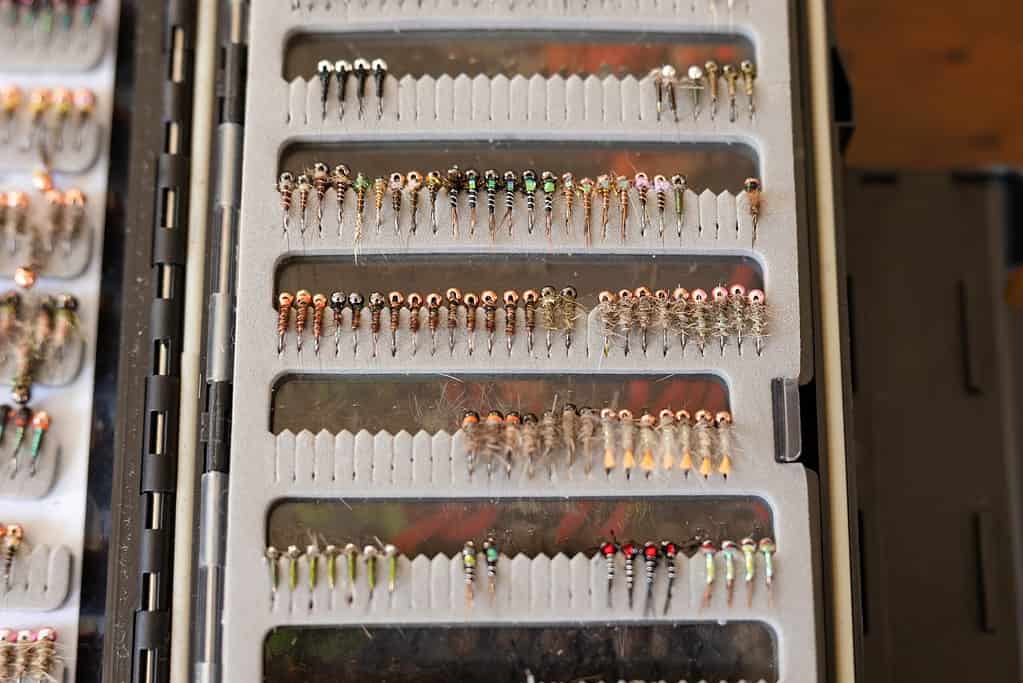
A fantastic way to improve your catch rate is by nymphing. In this section, I’ll provide a detailed explanation of how to nymph effectively.
Firstly, select a suitable fly rod to handle larger rainbow trout. I recommend a 6# rod that is 8-9 ft long. Ensure the reel has a high-quality drag system capable of handling larger fish. Add a weight-forward floating fly line onto the reel to allow your nymphs to sink at a gradual rate.
Attach a nine-foot leader to your fly line and a tippet that has a strain of 8lb. Beginners should commence with only two flies. Using three flies can lead to tangles and make casting more challenging. More advanced fishermen can use three nymphs as this setup tends to cover more water. If you’re not using three nymphs, consider adding a dropshot on the end of your tippet to keep the flies down in fast-moving currents.
Research the flies in your local water and find a nymph that closely represents them. Personally, I recommend using a hares ear, a very common fly for this style of fishing.
I personally do not recommend using a strike indicator, as it can lead to bad habits such as missing smaller takes and pauses. However, if you are struggling with nymphing, it could be a good option to better see when a strike has occurred.
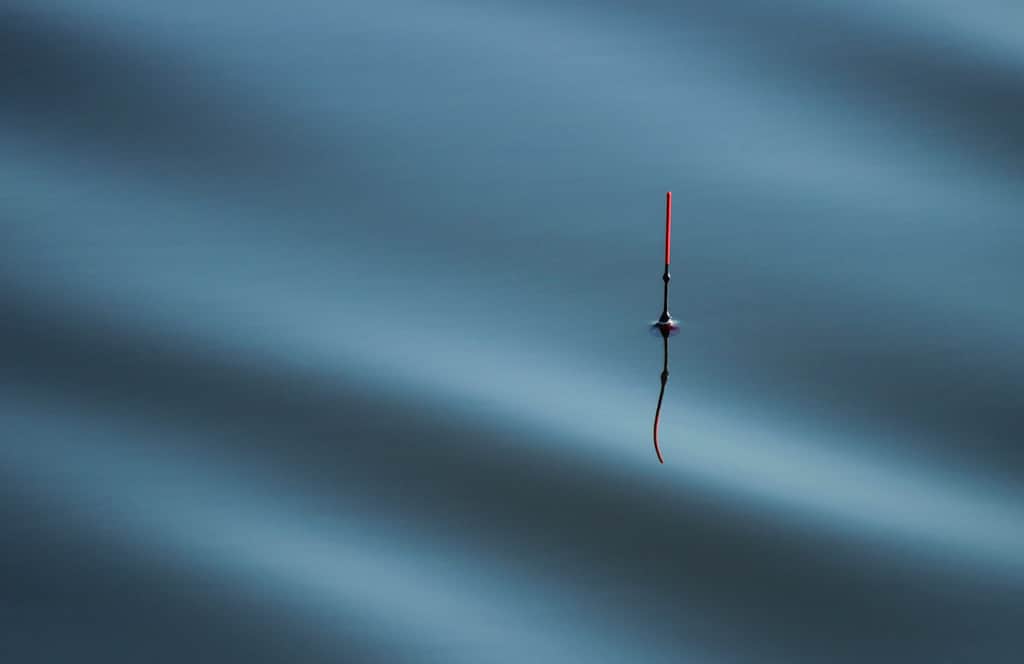
To cast the flies, lift the first two flies out of the water and using the tension of the remaining one, cast it horizontally across the stream or river you are fishing in. When nymphing, remember to cast upstream, keeping the line taught in the air and allowing the flies to drift down by you until unnatural drag occurs. Unnatural drag can be seen in the water when the flies are no longer naturally flowing downstream. You may need to mend your line throughout this process. Mending your fly line is the process of slightly adjusting it to reduce slack line.
How Do You Catch Bigger Rainbow Trout Bait Fishing?
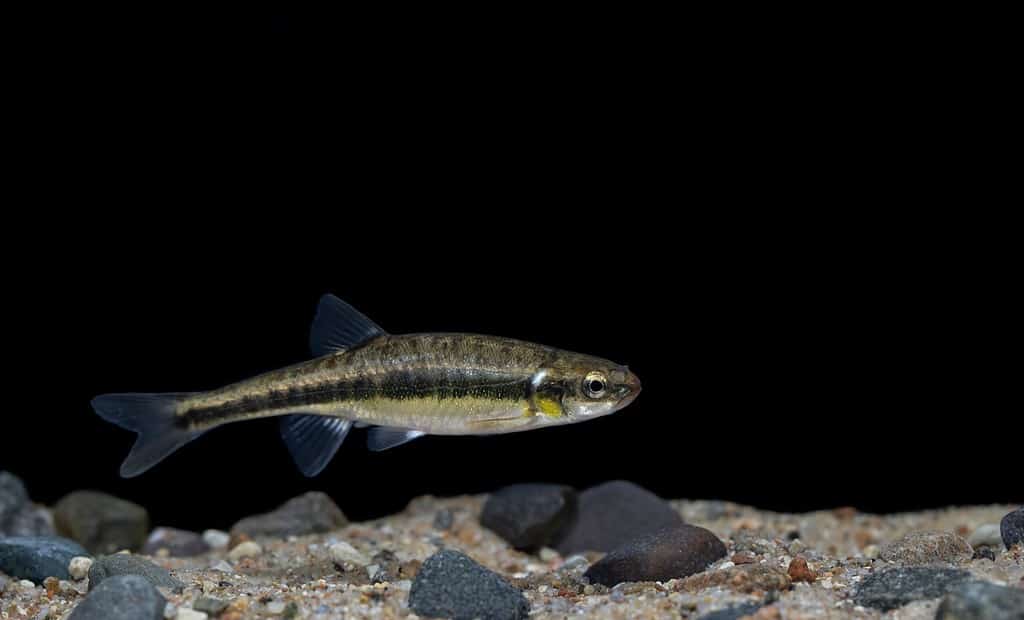
When targeting rainbow trout with methods such as bait fishing, avoid using smaller baits like sweetcorn and earthworms. Instead, opt for larger baits such as nightcrawlers, minnows, or small crayfish. Using bigger baits will likely discourage smaller rainbow trout from striking.
To adjust the depth of your bait while bait fishing, you can use sinkers or bobbers. For better chances of catching large trout, I recommend fishing at a deeper depth since larger trout tend to hide in holes along rivers and lakes.
For successful trout bait fishing, consider cooler temperatures. During warmer weather, trout are less likely to feed on larger insects or aquatic creatures. Therefore, the best times to fish are at sunrise or just before sunset when temperatures are cooler.
Final Thoughts
Rainbow trout can reach a remarkable weight of 50 lbs. However, it’s essential to consider the differences between genetically altered trout and natural fish. I’ve included a comprehensive guide on how anglers of all levels can specifically target rainbow trout. The article thoroughly covers their growth sizes, maximum weight, age, and growth speed. Good luck and tight lines!


 Facebook
Facebook YouTube
YouTube
